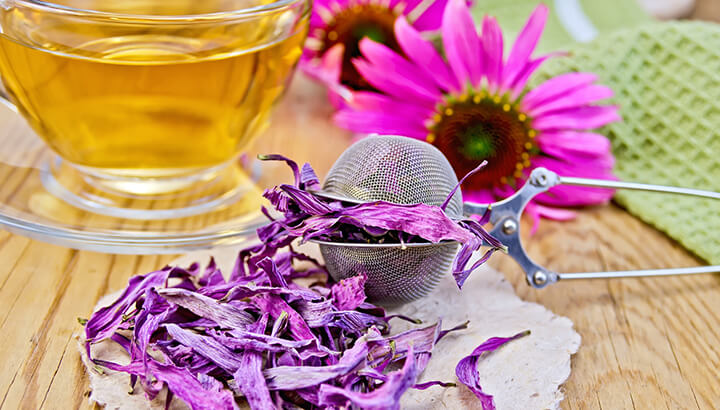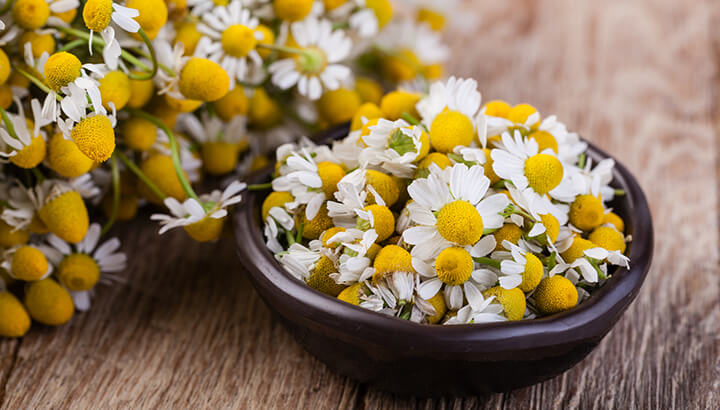
Wouldn’t you love to have your own medicinal “go-to” garden? It doesn’t have to be complicated. Heck, you don’t even need to live in a house with land! Even apartment dwellers with balcony space can grow containers filled with medicinal herbs. These are herbs you can use to make healing tinctures, teas and so much more.
Growing medicinal herbs is easy
Since the beginning of time, humans have been turning to plants for sustenance and healing. But somewhere along the line, much of civilization stopped relying on mother nature and turned instead to pharmaceutical remedies for even minor aches and pains. And many of those remedies can be costly. So, why not grow healing plants in your own medicinal herb garden? Good quality potting soil, water, fertilizer and a sunny spot is really all you need.
Most medicinal herbs are easy to grow. In fact, one of the best ways is to grow them is in containers. Generally, you won’t need a lot of one particular herb, so one or two containers is usually enough. Once you’ve chosen your medicinal herbs, just combine them in a single container with soil. You can also integrate your medicinal herbs into your perennial beds. Many are fragrant, grow beautiful flowers and have interesting foliage that will enhance your landscape.
Choosing medicinal herbs
North America has a variety of medicinal plants that can help relieve pain and even cure illness. You may be accustomed to using herbal medicines for your own personal health needs. Studying the medicinal teas or ready-prepared natural remedies you use most often is the best way to become acquainted with medicinal plants and how they work.
In the meantime, here are four favorite herbs you may want to include in your own medicinal herb garden.
Echinacea

Echinacea is probably one of the most popular medicinal herbs today. Once known as the cure for the common cold, now Echinacea is recognized for its multiple uses and benefits. Native to North America, it’s been used in traditional medicine for hundreds of years.
In fact, in the 18th and 19th century it was considered a “cure-all” herb. But, its popularity declined in the U.S. with the introduction of antibiotics. There are nine different species of echinacea, but only three contain medicinal value: Echinacea angustifolia, Echinacea pallida and Echinacea Purpurea.
Benefits
After reviewing dozens of studies, scientists from the University of Connecticut School of Pharmacy concluded that echinacea not only shortens the duration of a cold, but will also reduce the odds of developing a cold by 58 percent. Additional research from Penn State Medical Center reports that echinacea contains active substances that boost immune function, relieve pain and reduce inflammation. It’s also said to have hormonal, antiviral and antioxidant properties.
How to grow echinacea
Growing echinacea is not difficult. Echinacea is a lovely perennial flower that will brighten your herb garden. It has tall stems and bears a single pink or purple flower, and a central purple or brown cone.
- Echinacea grows best in soil that drains well.
- An initial light fertilizing is beneficial, but not necessary after that.
- Water echinacea regularly until it is well established in the ground. Later, you will rarely need to water it. In fact, they won’t thrive if overwatered.
- Harvest the flowers or leaves right after they begin to bloom and cut each stem where the first set of leaves grow.
- Rinse the flowers and then hang them to dry or lay them flat on a screen.
Echinacea contains several vitamins including A, B-complex and E. It also contains several minerals including magnesium, calcium, iron, potassium and sodium. Enjoy echinacea as a tea by simmering half a cup fresh or a quarter cup dried leaves, roots and flowers in one cup of filtered water for about 15 minutes. Strain and add raw honey to taste.
Feverfew
Feverfew is another highly beneficial herb that is easy to grow and maintain. It’s a species of chrysanthemum that has been grown among medicinal herbs for centuries. Native to central and southern Europe, it grows well throughout North America.
Benefits
Feverfew is most commonly used to combat migraines and headaches. It’s thought to have painkilling and anti-inflammatory properties that release serotonin from blood cells and slow the production of a histamine. Both serotonin and histamine play a large role in migraines.
A rheumatology study from Massachusetts General Hospital found that combining feverfew and ginger lessened the severity of a migraine and decreased pain two hours after treatment. Feverfew was also more effective at suppressing “pulsating,” nausea and sensitivity to light at the onset of a migraine.
In addition, Neuropathy Treatment Group suggests that feverfew relieves pain similarly to pharmaceutical pain relievers or fever-reducing meds. But, unlike these over-the-counter meds, feverfew has no lasting side effects. Feverfew may even be beneficial for relieving arthritic pain.
How to grow feverfew
Feverfew has small, white, daisy-like flowers with bright yellow centers. Whether in a container or in the garden, feverfew needs sun to thrive.
- Like echinacea, feverfew is a perennial. So, cut it back to the ground after frost, and watch it return in the spring.
- Water regularly until the roots take hold.
- It will re-seed easily. So, if not in a container, choose an area in the garden where you don’t mind it spreading.
- Feverfew blooms between July and October.
Feverfew is quite bitter. Therefore, it’s not recommended for using in tea. The best way to use fresh feverfew is to chew two or three fresh leaves per day. Note: If you are allergic to plants in the ragweed family, you may want to avoid this herb.
Chamomile

Chamomile refers to a range of different daisy-like plants. In fact, there are many different species of chamomile. But the two most commonly used for medicinal purposes are German chamomile and Roman (or English) chamomile.
Both have been used since ancient times for their calming and anti-inflammatory properties. If you prefer a perennial, choose Roman chamomile for your medicinal garden. German chamomile is an annual plant.
Benefits
One of the main benefits of growing chamomile is its ability to help treat anxiety and depression. In fact, it’s one the best medicinal herbs for fighting stress and promoting relaxation, according to a study from the University of Pennsylvania School of Medicine.
Other reported benefits include providing relief from gas, acid reflux, indigestion, diarrhea, anorexia, motion sickness, nausea and vomiting. It may even help treat leaky gut syndrome.
How to grow chamomile
- Chamomile is slow-growing and does not tolerate hot, dry weather.
- Roman chamomile grows low to the ground and about one foot in height, making it a good ground cover. On the other hand, German chamomile grows tall to about 2 1/2 feet.
- It thrives in full sun, rich soil and good drainage.
- Water frequently until established.
The best way to enjoy chamomile is by steeping it in tea. Use about one teaspoon dried chamomile flowers per cup. Steep for five minutes and then strain. Over-steeping may result in a bitter cup.
Mint
Mint dates to ancient history, but has found its way around the world simply because it’s both a medicinal and culinary delight. There are many varieties of mint — all fragrant. The Farmer’s Almanac recommends the following varieties:
- Apple/pineapple mint
- Corsican mint
- Pennyroyal
- Peppermint
- Citrus mint
- Spearmint
Benefits
Apart from being a great breath freshener or palate cleanser, mint promotes digestion. If you’re feeling sick to your stomach, a cup of mint tea can give you fast relief. Research suggests that mint may be ideal for soothing nausea and even motion sickness.
Mint is also very effective in clearing up congestion and loosening phlegm, according to the University of Maryland Medical Center.
How to grow mint
- Mint is a vigorous perennial that thrives in light, moist soil with good drainage.
- Some shade in tolerated. The multicolored varieties may require some protection from direct sun.
- Use container planting since mint tends to take over a garden.
- Apply a thin layer of compost or organic fertilizer every few months.
Add mint to your yogurt or smoothies. Or, enjoy a cup of tea made with five to 10 large leaves. Tear the leaves before placing in your mug. Then muddle them for a few seconds with the back of a wood spoon. Pour hot (not boiling) water over the leaves and allow your tea to steep for five to 10 minutes.
Drying and preserving your medicinal herbs
After collecting your herbs, it’s important that you prepare them for storage as quickly as possible to preserve their potency. Herbs dry best in warm, shaded, well-ventilated areas. It is not recommended to dry them outside in the sun because the intense heat will degrade the plant’s medicinal constituents, says the Herbal Wisdom Institute.
Instead, create small bundles of herbs and hold them together with rubber bands, placed at the end of the stems. Then, hang them upside down on a string in the kitchen until they are dried completely.
Growing your own medicinal herbs is a great way to fill your garden with beauty, fragrance and natural remedies for common ailments. Happy growing!
CLICK HERE TO DISCOVER EVEN MORE WAYS TO ENHANCE YOUR GARDENING SKILLS.
— Katherine Marko

